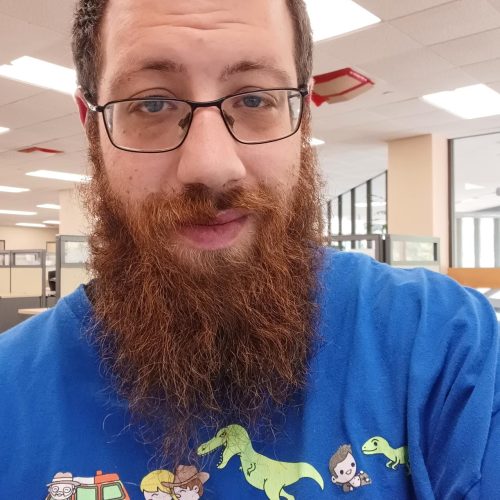The Lifestyle Question of Social Security
Advisors and their clients must plan for the very real possibility that Social Security benefits will be reduced if the system runs out of money in 2033.
This article first appeared at Rethinking65.
Listen here:
I have had my emotional ups and downs with Social Security, and I have not even drawn a penny out of the program. I am 60 and have had my wages garnished and paid into the system since my first job at 16. As an economics major in college, I wrote a paper in my senior year on the viability of the entitlement program and concluded it might not be around when I retire.
That has stuck with me over the years. On many a meeting with our financial advisors, my wife and I have asked them to run a model without including Social Security in the mix. It’s a way for us to gauge what it would take to head into post-career life without worrying about those funds, should the program not be there.
We have worked with five teams at three wealth management companies. The first three advisors basically chuckled when running the models without Social Security, confidently telling us don’t worry, it will be there. Our fourth advisor said it was pragmatic to be wary, but also pushed us to not get too hung up on it and to assume the Money would be there. Our current wealth management team has provided us models from both viewpoints. Recently, that has become very important as we consider our Retirement life.
The Grim Reality
The Social Security program, particularly the Old-Age and Survivors Insurance (OASI) Trust Fund, is projected to face significant challenges. According to the latest reports, the OASI Trust Fund is expected to deplete its reserves by 2033, at which point it will only be able to pay approximately 79% of scheduled benefits based on incoming revenues. This shortfall is primarily driven by an Aging population and a declining ratio of workers to beneficiaries, which has fallen from 4.3 workers per beneficiary to 3.1 over the past 60 years.
The potential benefits reduction has caused us to change our approach. My wife and I were planning to retire early. The models showed we could do that, if we choose to use Social Security along with our savings. Yes, we both would keep working, but our occupations would not be used to provide needed income, but for meaning and Lifestyle value. Unfortunately, my college paper has become a little too prophetic.
Our advisors ran the models with a 20% and 50% reduction in the funds derived from Social Security, and we dropped below the ideal zone. We could choose to move forward and put ourselves at risk later in life, or we could delay early retirement and remain fully in-career to contribute more and let the money work more. We have chosen the second option. While the retirement lifestyle I have crafted has been delayed, it is certainly not the end of the world.
However, your clients may be in for quite a surprise when it comes to their plan, particularly if retirement life relies on the flow of funds from Social Security. What happens if those dollars get cut by as much as half? Have they — and you — considered what that would mean for the life they want to live post-career? Here are some things I have done for myself (and discussed with my clients) that you can use to raise awareness for your customers as well.
Take the Retirement Worry Analysis
Free Resource
Worry is a natural part of our human existence but can complicate post-career or retirement life. The Retirement Worry Analysis (RWA) is an assessment tool to help identify financial, personal, and medical concerns the average retiree faces as they age.
The Lean Budget
If no reforms are enacted, beneficiaries starting to draw Social Security in the next decade could face automatic cuts to their benefits, estimated at around 21%. Even before this hard reality hit, my wife and I have prepared two retirement budgets, the ideal and the lean.
The ideal includes all the activities, events, and flexible nature of spending that will happen in retirement. It is not “pie in the sky,” but a comfortable plan that allows for fulfillment of most of our personal goals defined today. The lean budget is focused on the bare minimum we would spend each year to meet our fixed financial obligations, while leaving some room for a limited amount of discretionary spending.
We will continue to ask our advisors to run models based on both budgets to help us bring Clarity to short and long-term decisions.
Overcoming Policy Insecurity
The ongoing discussions in Congress about how to address the financial shortfall may lead to various reforms, including raising the retirement age or increasing payroll taxes.
In conjunction with our advisors, we are trying to “policy proof” our portfolio. I can get cynical when it comes to my faith in our politicians solving a problem like this. Therefore, I am incentivized to minimize the impact Washington will have on our financial strategy.
Alternative Income and Time
As Social Security benefits potentially decrease, retirees may need to seek alternative sources of income, such as part-time work or drawing down savings more quickly than planned. This shift could lead to increased Stress and reduced quality of life for many older adults.
My wife and I both own businesses. Hers is a non-profit, mine for-profit. While our retirement lifestyle plan did rely on the businesses to deliver revenue, we are looking at them as opportunities to provide income flexibility, should it become necessary.
Individuals approaching retirement may need to adjust their financial plans, potentially saving more or Investing in different assets to compensate for expected reductions in Social Security benefits.
I’ve always wanted to ensure that there was flexibility in our plans, yet I have a tendency now to be more risk averse. My wife and I have spent decades being disciplined to save for the future. However, we don’t want to be so rigid that we are unwilling to adapt to some significant changes that could be on the horizon.
Take the time to talk about Social Security, even with those clients who aren’t impacted by any benefit adjustments. You may find there are other hidden concerns that warrant your attention.
David Buck is the author of the book The Time-Optimized Life, owner of Kairos (Time) Management Solutions, LLC. Learn how to apply the concepts of proactively planning and using your time. Take the Time Management Analysis (TMA), the Retirement Time Analysis (RTA), or all the other free resources offered to help bring more quality time into your life.
The post The Lifestyle Question of Social Security first appeared on Infinity Lifestyle Design.


























